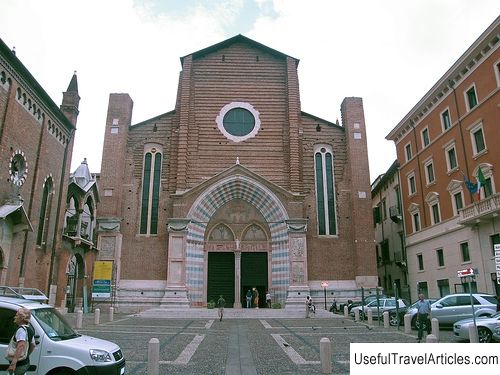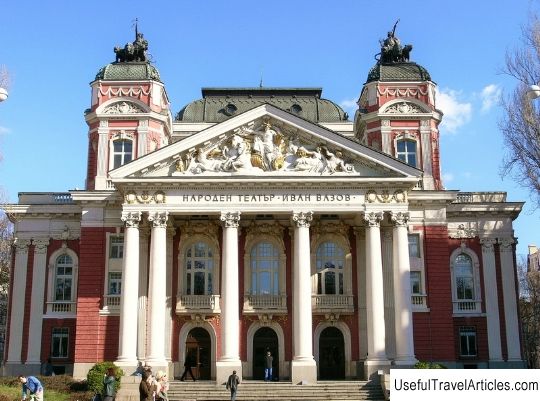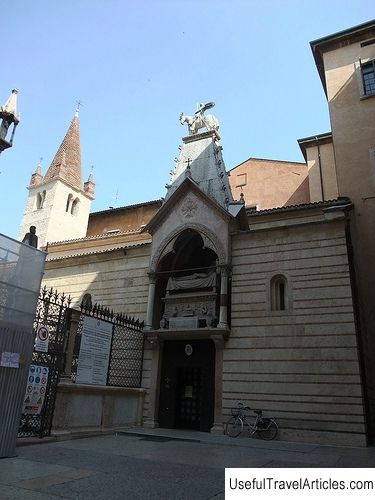Church of St. Anastasia (Chiesa di Santa Anastasia) description and photos - Italy: Verona
Rating: 8,5/10 (2850 votes) Church of St. Anastasia (Chiesa di Santa Anastasia) description and photos - Italy: Verona. Detailed information about the attraction. Description, photographs and a map showing the nearest significant objects. The title in English is Chiesa di Santa Anastasia. Photo and descriptionBuilt in the Gothic style, the Church of St. Anastasia is the largest church in Verona, belonging to the Dominican order. Located in the most ancient part of the city near the Ponte Pietra bridge, it bears the name of the Christian great martyr Anastasia the Uzorezitelitsa Once there was another church, also erected in honor of this saint by order of the Emperor Theodoric the Great. Construction of the current basilica began in 1290, presumably designed by the Dominican monks Fra Benvenuto da Bologna and Fra Nicola da Imola. The construction of the temple stretched for almost a century and a half, and was completed only in 1400. In 1471 a new church was consecrated. In fact, it was consecrated in honor of St. Peter of Verona, however, the locals from the very beginning called the basilica after the previous church, and under this name it became known outside Italy. The central facade of the church with a simple rosette window remained unfinished - its upper part is not tiled. The main entrance, decorated with bas-reliefs by Rigino di Enrico depicting scenes from the New Testament and the life of Saint Anastasia, has two doorways. A bell tower is attached to the high apse of the basilica, which is crowned with a pointed spire. And nearby is the sarcophagus of Guglielmo di Castelbarco, created at the beginning of the 14th century and, as it is believed, served as a model for the famous Arcs Scaliger. Inside, the Basilica of St. Anastasia consists of a central nave and two side chapels, separated by a colonnade of 12 marble columns. They, in turn, run into the vault, decorated with floral ornaments. In the left side aisle there is a monument to Cortesia Serego, made in 1432, and at the entrance there are water-blessing bowls from the 16th century, next to which you can see the so-called "hunchbacks of St. Anastasia" - grotesque statues. Above the portal are images of the bishop leading the towns of Verona, and St. Peter of Verona with the monks. The central column, standing between the doorways, is decorated with bas-reliefs of St. Dominic, St. Peter of Verona and St. Thomas. On the floor of the church in 1462, the painter Pietro da Porlezza laid out a wonderful mosaic of white, pink and gray-blue local marble, which also partially lined the entrance to the basilica.        We also recommend reading Albornoz fortress (Fortezza dell'Albornoz) description and photos - Italy: Orvieto Topic: Church of St. Anastasia (Chiesa di Santa Anastasia) description and photos - Italy: Verona. |





